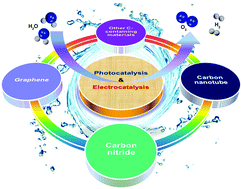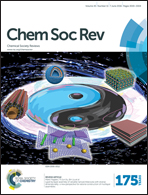Metal-free carbonaceous electrocatalysts and photocatalysts for water splitting
Abstract
Water splitting driven by sunlight or renewable resource-derived electricity has attracted great attention for sustainable production of hydrogen from water. Current research interest in this field is focused on the development of earth-abundant photo- or electrocatalytic materials with high activity and long-term stability for hydrogen and/or oxygen evolution reactions. Due to their unique properties and characteristics, carbon and related carbon-based materials show great potential to replace some of the existing precious metal catalysts in water splitting technology. This tutorial review summarizes the recent significant progress in the fabrication and application of metal-free carbonaceous materials as photo- or electrocatalysts for water splitting. Synthetic strategies and applications of various carbonaceous materials, including graphitic carbon nitride (g-C3N4), graphene, carbon nanotubes (CNTs) as well as other forms of carbon-containing materials, for electrochemical or photochemical water splitting are presented, accompanied by a discussion of the key scientific issues and prospects for the future development of metal-free photo- and electrocatalysts.


 Please wait while we load your content...
Please wait while we load your content...